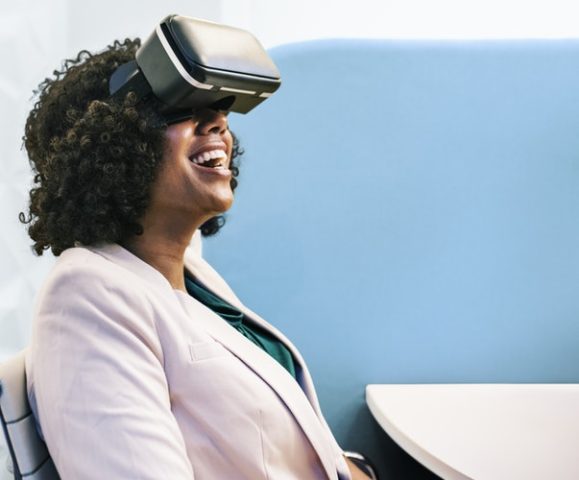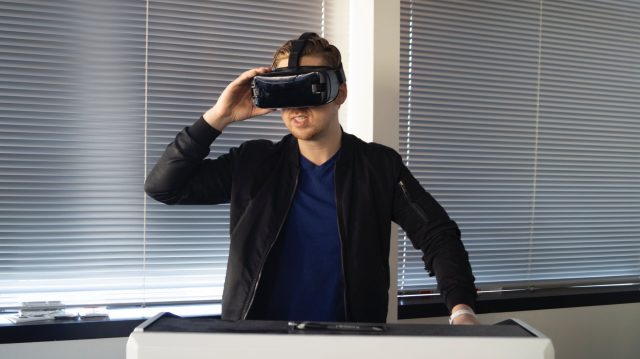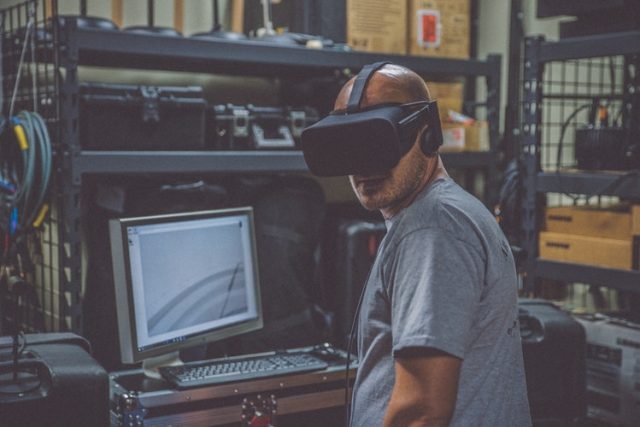The Future of XR Technology in Various Industries
By Roger Blacker
November 13, 2018 • Fact checked by Dumb Little Man

Extended reality (XR) will revolutionize the world we live in. Gamers and those in the education and training sectors might have seen some of that change, with over 45% of the total use of XR currently in education. However, the vast majority of businesses are still bound to experience XR in their working lives.
We’re here to tell you that although delayed, the XR revolution is coming. Those in the technology sector might have jumped the gun, but XR is no gimmick. It has the potential to have a profound impact on the way companies perform everyday tasks.
So, what is the future of XR technology and how can you use it for your business?
Interacting with customers in a more engaging way

One of the biggest pain points for businesses is engaging with consumers in a way that actually means something to them. Social media has allowed businesses to create a two-way channel of communication with their customers like never before. Unfortunately, it is still limited in terms of the experiences it can create.
Experiential marketing is all about creating experiences customers want to be a part of. A Freeman Global Experience study has found that a third of CMOs plan to spend 21-50 percent of their budget on experiential marketing over the next few years.
XR’s ability to deliver immersive experiences and connect with consumers is unrivaled but don’t just take our word for it. There are numerous examples of businesses that are waking up to the power of extended reality.
BMW lets customers configure a car to their exact specifications using an augmented configurator. That technology will soon be available in dealerships. Soon, customers can walk into a showroom and create, touch, and test a virtual car before a single panel is built.
Similarly, the fashion retailer Zara is taking its first steps in XR. It is introducing an AR app in its stores that will allow customers to try on virtual outfits before buying them. This is being introduced as a way of tempting millennials away from online retailers and into its stores.
Changing the way employees work

Many organizations are already applying elements of extended reality to their own workplaces to transform the way their employees work. XR allows workers to do their jobs more efficiently.
One example is AR overlays that deliver real-time data to service technicians, allowing people like boiler engineers and plumbers to fix systems and installations without the need for manuals.
Workplace training represents a huge growth area for XR technology. That’s thanks to its unrivaled ability to recreate real-world environments in a safe and cost-effective way. Another area where XR offers tremendous potential is in improving the ability of workers to connect and collaborate.
For example, remote workers can use XR to co-design complex items, stress-test real-time design changes, and collaborate on visual data remotely.
The smarter delivery of data

Extended reality has the potential to place rich data in a context like no other technology. As an example, an engineer working in a production facility might look at a computer screen that provides information about how all the different elements of a production plant are performing. While that data can certainly provide valuable insights, the delivery of it could be dramatically improved.
XR technology could provide an overlay of that data displayed above each piece of machinery. That way, it can be viewed by the engineer on a walk through the plant. Delivering the same data in bite-sized chunks makes it more digestible and easier to spot when equipment is not performing quite as well as it should.
There are still many more applications to come
With devices evolving and becoming increasingly affordable, we think it’s a matter of when and not if extended reality makes its presence felt. We’re still very much in the early days of this burgeoning technology. It will be fascinating to see what other ways XR can be used in our industries.


